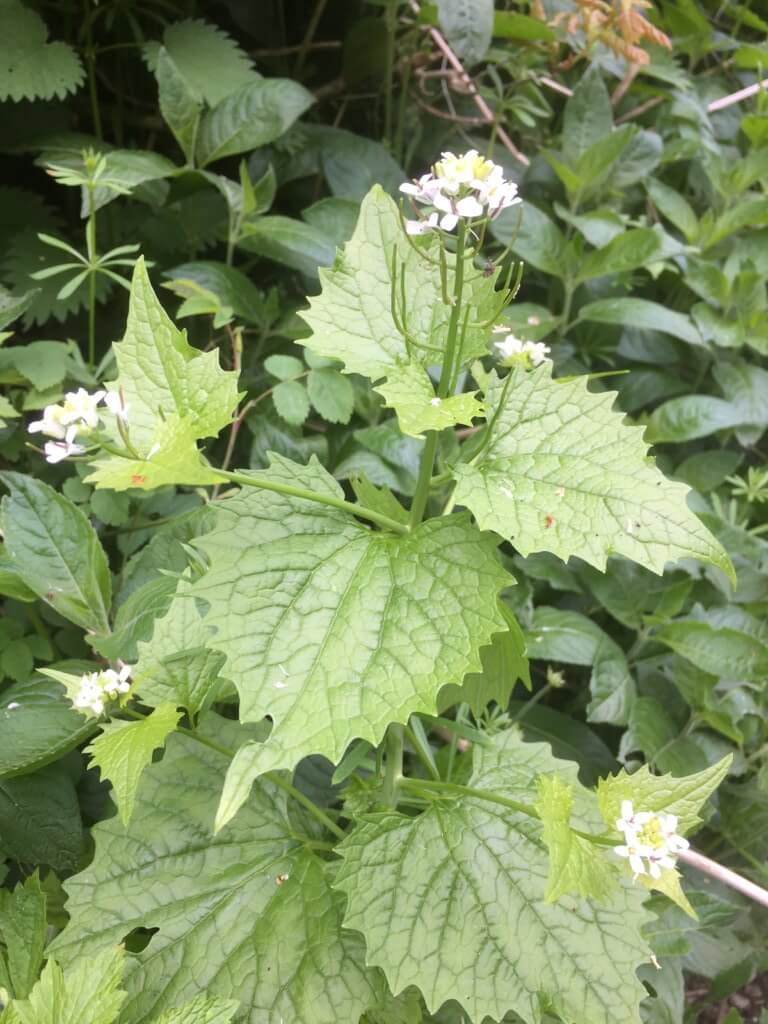 As suggested by the name this cabbage-relative has two flavours for the price of one, though the garlic comes across rather more strongly to my mind. The leaves are actually tasteless until they are crushed or, if you will, ‘tasted’. The chemical reactions producing the strong flavours only take place (as a defence mechanism) once the foliage is under attack. It’s a bit like Schrodinger’s cat – the act of tasting destroys our ability to perceive the plant’s tastelessness.
As suggested by the name this cabbage-relative has two flavours for the price of one, though the garlic comes across rather more strongly to my mind. The leaves are actually tasteless until they are crushed or, if you will, ‘tasted’. The chemical reactions producing the strong flavours only take place (as a defence mechanism) once the foliage is under attack. It’s a bit like Schrodinger’s cat – the act of tasting destroys our ability to perceive the plant’s tastelessness.
I always think of it as a rather poor substitute for Wild Garlic but with the advantage that it is abundant and widespread along verges and hedgerows. If you fancy a quick garlic-flavoured nibble and are not lucky enough to be near ancient woodland then this is your best bet.
It is at its best early in the summer and the leaves become increasingly tough and tattered as the season progresses and hordes of hungry invertebrates take an increasing toll. Even the fresh leaves look as if they have had chunks bitten out of the edges giving them their distinctive shape. Could this also be a defence mechanism – a deceptive message that this plant has already been started so please move along and find something else where you will have less competition?
[registration_form]
Our Border Terrier loves it.
The sparrows go nuts for the seeds later in the year, I know that. They love it. If you want to help the sparrows, then get some of this around the place.
Fortunately this is a very abundant species. Few people (or sparrows) will need to travel far to find some growing in a hedgerow or on a roadside verge.
As well as being eaten by sparrows this is one of he main food plants for both the Orange-tip and the Green-veined White. The former feeds on the seed pods and the latter on the leaves.
No plant is so abundant that it could not stand to be planted a bit more widely.